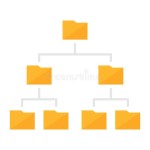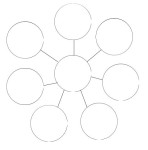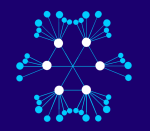I am new to the idea of MOC’s and I have read that others on the forum are struggling to understand what they do etc. Below is my attempt to understand MOC’s and why they are so useful.
If we take the folder structure, I view it as a top down hierarchical structure. Very good at narrow focus, never runs out of space but poor at connecting multiple things to other things and showing the bigger picture or overview. I see the symbol of this as a vertical triangle.

The mind map or network on the other hand is co-planer, everything exists on one plane,there is no hierarchy to speak of. sure you can enlarge a node, make it a color to stand out, adjust the size, but it still remains basically flat. Characterized by very broad focus showing well the big picture, how things relate to other things, but doesn’t lend itself to fine detail. I see this as best symbolized as a horizontal circle

I introduce the shapes for easy visualization and to further emphasize the polar opposite nature of these two methods of informational display.
If the vertical triangular hierarchy of the folder structure is the thesis, then the co-planer horizontal network mind map is the antithesis.
The synthesis then I suggest is to join the two shapes together which then forms a three dimensional cone shape. This is achieved using Maps of content
 Side View
Side View
 Plan View
Plan View
The above illustrations are the closest I could find for my purpose, but its not perfect.
The MOC or ‘hub’ therefor introduces a vertical aspect into the network. At the cost of trading some of the properties of the horizontal network for the properties of hierarchical folder type information display. We strike a balance, a best of both worlds solution
The amount to which a vertical aspect is introduced i.e. levels or tiers in the map/graph through MOC’s/hubs, and the amount to which the horizontal co-planer network aspect is maintained, determines which ‘informational display’ characteristics predominate.
In other words its a sliding scale, the more verticality, the more narrow the focus (specificity perspective) is achieved . Conversely, the more the network maintains its horizontality, the broader the focus or (entirety perspective).
Quote defining Hierarchical networks :
A hierarchical network is the type of network topology in which a central “root” node (the top level of the hierarchy) is connected to one or more other nodes that are one level lower in the hierarchy (i.e., the second level) with a point-to-point link between each of the second level nodes and the top level central “root” node, while each of the second level nodes that are connected to the top level central “root” node will also have one or more other nodes that are one level lower in the hierarchy (i.e., the third level) connected to it, also with a point-to-point link, the top level central “root” node being the only node that has no other node above it in the hierarchy. Hierarchical network | The IT Law Wiki | Fandom